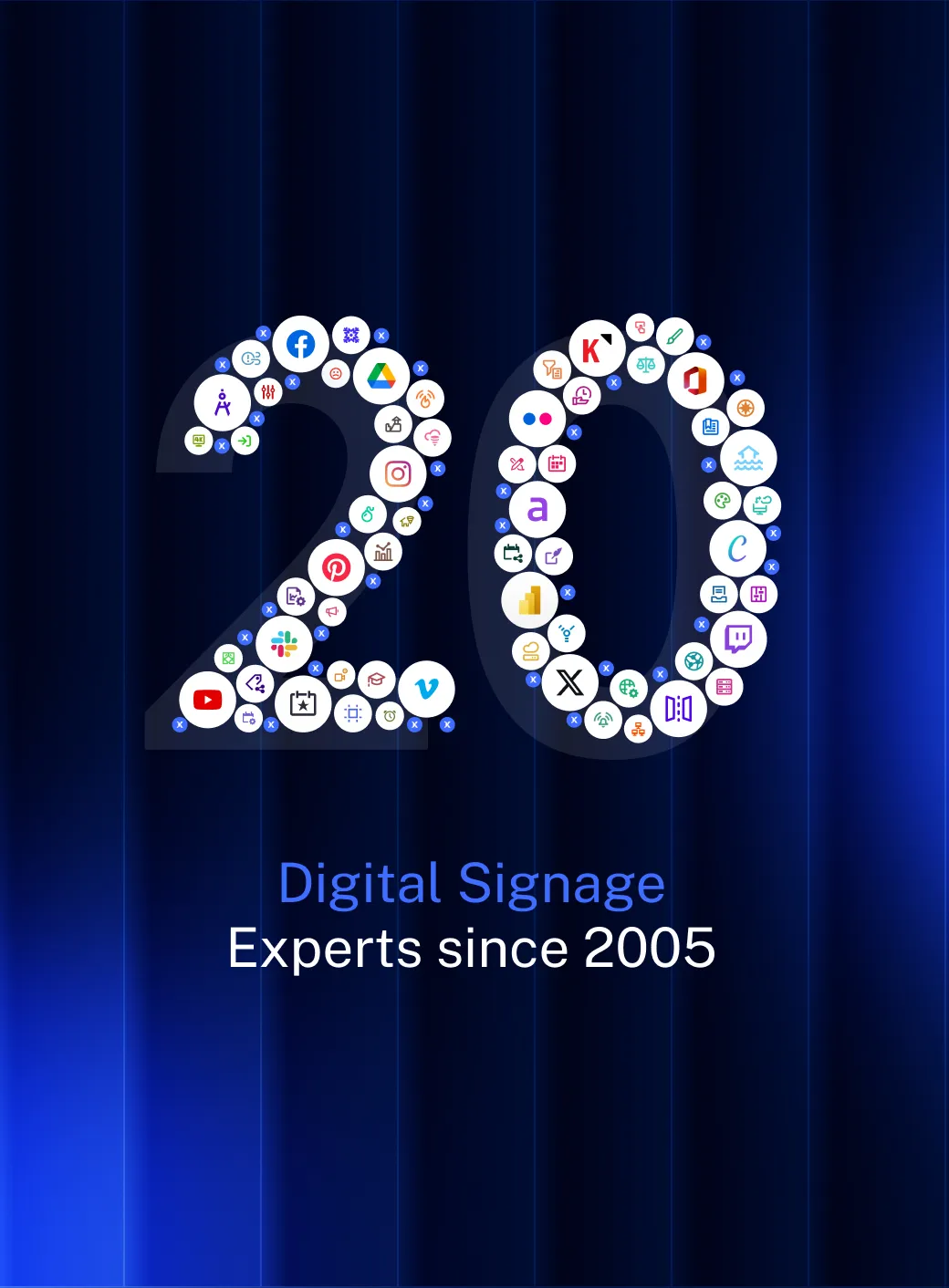

In order for a business to run smoothly, there must be efficient internal communication. Businesses can achieve that through this vital factor: Organization! A business's success is determined by how organized and coordinated the employees are. There are many cases where businesses can use digital signage to improve both organization and communication among employees. Let’s look at one use case in particular: digital meeting room signs.Here are 6 tips for using digital meeting room signs to improve employee organization and communication:
We all know how frustrating it can be to head to a conference room to prepare for a meeting, only to find that it has already been taken. Avoid this issue by installing digital screens outside each meeting room and installing a shared booking calendar app. Google Calendar, Exchange, Outlook, or EMS Master Calendar are a few good examples.These digital meeting room signs provide real-time information on upcoming events that anyone can view or edit. This type of visibility can completely change the way your employees structure meetings. Each room’s time is accounted for on a master calendar. Employees can look ahead and schedule out meetings rather than just grabbing whatever room is available. (This is also great for employees who like to grab empty rooms for impromptu meetings. That's because the room availability will be clear to everyone.)On top of that, managers can program their meeting room signs to display projected meeting times of each event. This can include countdowns for when the room will be available again. This makes employees aware of how long each meeting will take. But also, when the attendees will be free to deal with other matters. Best of all, this whole system can be set to update automatically—no manual input required from operators.
Next, consider using meeting room signs to provide company information: Policies, details, branding, and so on.For example, include a template in each room’s content rotation that describes the room’s size, its features, and what the company expects from guests who use the space. Employees should know most of this already. So, this type of messaging is more suited to meeting rooms that host outside visitors. Make company expectations clear. Also, use the digital meeting room signs to ensure that everyone uses each room as they should.But don’t stop there. Meeting room signs can work great as a branding opportunity, especially for organizations that regularly bring in large crowds for events or expos. Consider creating a custom layout for each screen that features the brand’s colors and company logo in the corner. Combined with the digital signage investment itself, this strategy projects a sense of polish and professionalism to visitors that can’t be matched with static signage.
Somewhat related to point two, make sure that your digital meeting room signs include details about each room’s assets and resources. A few options here include the room’s A/V components, projector screens, seating capacities, internet access, or amenities like coffeemakers.The goal here is to get employees to better utilize the available spaces. We’ve all seen situations where a small group of three or four employees take up a large conference room intended for 10 or 20, or employees reviewing paper documents in a meeting room that has advanced digital projection capabilities.While these disconnects don’t always lead to inefficiencies, it can be frustrating for an employee to see the specific room they need being improperly used. Include room asset details in each meeting room sign to ensure that employees use each space appropriately.
Here’s another easy application of meeting room signs: Adding naming conventions for each room.Managers can assign specific names to each room based on the room’s function; e.g., “Projection Room,” “Casual Discussion Room,” and so on. This can help employees and visitors better understand which rooms are suited to which purpose.Managers can even create custom names or titles for various meetings and events being held in each room. For example, if a team meets once per month to discuss financial reports, operators can program “Monthly Financial Rundown” into the digital signage, giving onlookers an easy way to determine which meeting is being held in that particular room.Of course, if operators program calendars into their digital signage as described in point one, employees will be able to tell through the calendar app. But displaying the meeting name big and bold on the meeting room sign provides the information to anybody in the vicinity within a matter of seconds.
Naturally, wayfinding is always a good application of meeting room signs. Consider using digital signs in hallways and building lobbies to show meeting room availability, locations, event listings, and event start times. This is particularly helpful for companies that host out-of-town attendees or visitors in large buildings. Even full-time employees can struggle to find the right meeting room in some situations, never mind those visiting for the first time!Make it easy for them by including this wayfinding data in each content rotation, and for added clarity, include a map in the layout. These elements are super easy to add into any content rich digital signage, and they’re incredibly valuable to visitors trying to make it to meetings on time.
Here’s one more quick way to speed up organizational efficiency: Broadcasting cancellations. When companies need to cancel a meeting at the last minute, it can be tricky to disseminate that information to all scheduled attendees. If there is a meeting cancellation, broadcast it loud and clear with a content layout that details the cancellation and any information on rescheduling. This helps keep employees informed, and it also tells other employees that their desired room is available.
The above strategies are just a few ways that companies can put content rich digital signage to work for organizational efficiency. It’s a strategy that’s super easy and straightforward to implement; all managers need is the right digital signage solution to make it happen. Explore your options and experiment with different layouts for meeting room signs that let you communicate better with your team.